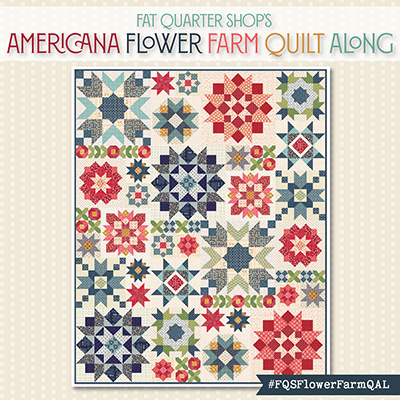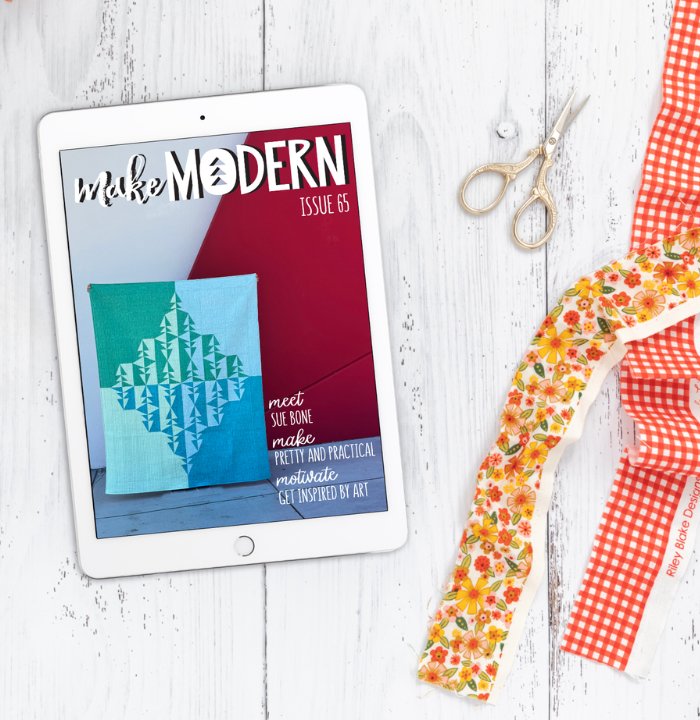

At this point, I have designed two motifs that are English Paper Pieced and then sewn to a block. These two patterns are a Whole Lotta Love quilt and Peppermint Way quilt. Essentially, if you have taken the journey with me and made these quilts, we are appliquéing. I love this process and have so many more ideas to expand this technique (which is not a new technique) into a series of patterns and quilts. Since my work in appliqué has been limited, I decided to explore different threads and stitches hoping to perfect my process. Now, I’m not saying this is the only way to do this. I am a bit of a fence-walker because I see and relate to both sides of an issue, strongly believing that there are many ways to do the same thing and each person should do what works best for them. But through my process of working on these two quilts, I ran into issues. That is why I am sharing this post on the best way I have found to use clear thread appliqué.

Appliqué Issue #1
The first issue I ran into was quilting my Whole Lotta Love quilt. I topstitched the heart to the block, leaving about a 1/8″ between the edge of the heart and stitch. When finishing the quilt top on my sister’s longarm, the needle and foot would push the edge up and stitch over it. This really frustrated me. Because I wasn’t quilting with a pattern and was trying to make organic wavy lines, I was able to avoid the edges and slow down the machine so I could lift the foot, avoiding the edge being sewn up. When you are far away from the quilt, you don’t see the issue. The quilt is finished and a finished quilt is better than an unfinished perfect quilt so I chalk it up to a learning experience and decided do better the next time.
Appliqué Issue #2
The second issue I ran into was appliquéing the peppermint ring to the block. The light grey thread was not working because the white and red fabrics were so different. I had red thread that would match perfectly on the red fabrics, and white thread that would blend perfectly on the white fabrics. However changing the thread for each piece was simply not going to work. It would be time consuming, could lead to shifting of the appliqué, and starting and stopping so many times could lead to a messy top.
There had to be a better way.
Troubleshooting
When I started my table runner, I attempted to troubleshoot issue #1. I tried a zigzag stitch instead of a simple topstitch. Then I used a stitch that was part zigzag and part topstitch and decided that this was perfect, but that is when issue #2 presented itself. I hated how the thread jumped out on the red pieces. This led me to remember how one of my pattern testers told me that she used a clear thread. I had never used it before. Honestly, clear thread scared me . . . like a lot! It has to be plastic right? It’s clear. Plastic and heat don’t mix. I happen to like untouchably hot irons, and clear thread sounded like a disaster waiting to happen to me.






Experimenting with Clear Thread Appliqué
Well, deciding to keep an open mind, I went into my LQS. I was assured that it would not melt and that it was THE solution I was looking for. Not only that but it would look beautiful. Because I learn by trial and error and was still hesitant to accept this new thread as part of my quilting staples, the first thing I did when I got home was cut a scrap of fabric into three parts. I threaded my machine with this crazy new thread, folded the scraps in half, and sewed a line down the middle. It was time for a heat test. Turning the iron to a cotton setting, I ironed one of the stitched scraps. It didn’t melt. I bumped up the heat. It didn’t melt. Then I turned the heat all the way up and it still didn’t melt. I was shocked. What a relief!
When combining the two solutions, I got the perfect result. Can you see the thread? I didn’t quilt the circle or ring because I love how it popped up. Anyone have any experience with this? I would love to hear the good, the bad, and the ugly experiences. If I do have any bad experiences, it will be time for another exploration. I still need to wash it. That thought scares me a little.

Here is an example of all three stitches next to each other. The first one is the top stitch, middle one is the zig zig stitch. On the right I used clear thread and a stitch that both zigzags and top stitches. I adjusted the width of the zigzag so it was exactly what I wanted.

Quick Tips On Clear Thread Appliqué
- Get a quality thread. Use it on top (and use your regular piecing thread on the bobbin). You CAN use the clear thread on your bobbin, but you will probably need to adjust your bobbin tension. If this is something you are not comfortable with changing, just use your regular piecing thread in the bobbin. I used a light grey.
- Clear threads are very fine, so you don’t need a large needle. I used a large needle and I see the holes more than I see the thread. If I had used a smaller needle, the hole would have been smaller and less obvious.
- Even though the thread looks shiny on the spool it does not look shiny when quilted. It blends into the fabrics.
- Give your thread some space to relax. Use a thread stand (cone holder) to give the thread some room to relax. If you have any other recommendations, I would love to hear them.
I hope this helps you refine your appliqué journey. Good luck, have fun, and keep an open mind.










